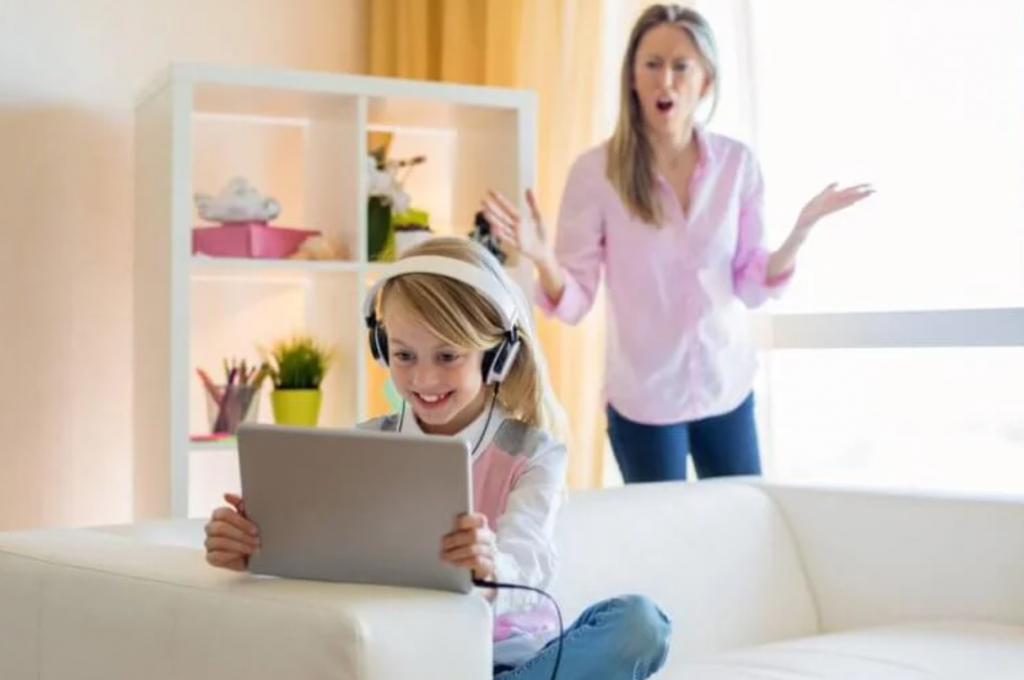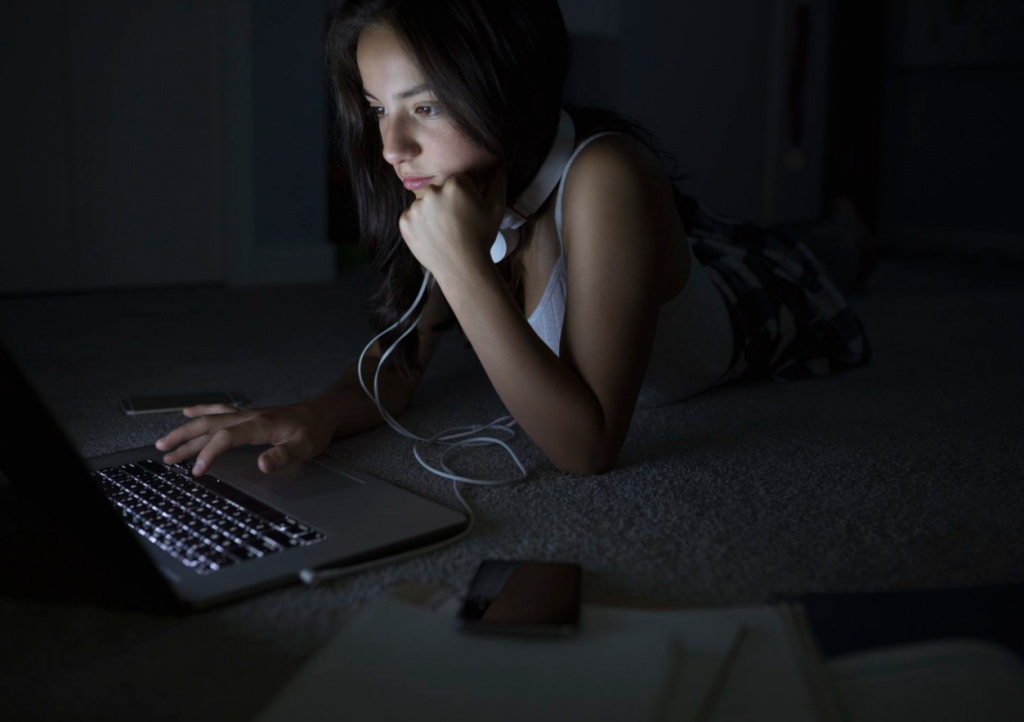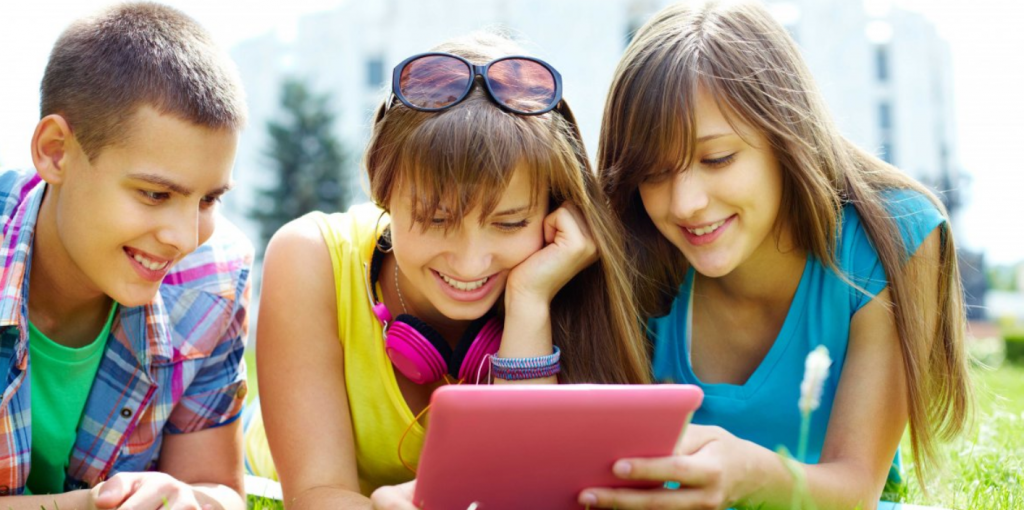Are you tired of constantly hearing “YouTube” every time you ask your teenager what they’re doing? This all-inclusive handbook provides valuable insight from actual teens on why YouTube is so popular, how it can become addictive, and what parents can do to control their teen’s obsession with it.
If your teenager is frequently on their phone, chances are they are spending a significant amount of time on YouTube. With its vast collection of entertaining and informative content, YouTube can easily capture and hold their attention for hours on end. As a parent, it is important to understand what YouTube is and how it works, especially if your child has access to the internet or a smartphone.
What Is YouTube?
YouTube is a video-sharing platform that allows users to upload and watch videos and engage with others through likes, shares, and comments. It has been in existence since 2005 and is deeply rooted in the online experiences of many, especially the younger generation. Besides the video-sharing feature, YouTube also provides a streaming service called YouTubeTV, which operates similarly to Hulu and Netflix.
Why is YouTube So Popular with Teens and Young People?
Teenagers find diverse video content on YouTube engaging, including comedy shows, music videos, how-to guides, life hacks, cooking tutorials, and other types of videos. Additionally, many teens follow video bloggers, also known as vloggers, who become popular among young people by creating and uploading videos regularly. Kyle, a 14-year-old, highlights the appeal of YouTube, saying, “I enjoy the platform because it offers entertaining videos on a vast range of topics, and I appreciate hearing different people’s perspectives on various issues.”
YouTube offers viewers the option to subscribe to channels that cater to their interests and feature celebrities. For instance, The Norris Nuts, a YouTube channel featuring an Australian family challenging each other to do silly things, is popular among young teens like Sariah*, who is 13 years old. Sariah and her friends use these videos as inspiration to perform their own silly challenges, fostering their creativity and learning new skills.
In this way, YouTube can serve as a motivator for young people to have fun and be creative off-screen, either independently or with a group.
YouTube is a popular source of information for people of all ages. Parents often search for videos on topics such as unclogging a drain or baking a cake, and children and teens do the same. At 11 years old, Laney stated, “I enjoy watching YouTube because some videos can teach you about things.” Having a visual and auditory way to learn makes it easier for many people to absorb new information, particularly because there are various learning styles, and reading instructions is not always the most effective approach.
For instance, some family board games or new appliances include a video link within their instruction manual as an alternative method for learning the associated directions.
Can YouTube Create Emotional Bonds with Teens?
Apart from being a source of inspiration, YouTube is also a popular platform for entertainment among teens. When in need of a laugh, they often turn to YouTube. According to Ethan, a 13-year-old, the primary reason for using YouTube is to find funny videos and memes that make him laugh.
He usually spends around 30 minutes doing this after completing his homework on weekdays. This is a common way for teens to reward themselves after finishing tasks and to escape from daily pressures.
YouTube provides an escape for teens from the pressures and challenges of the real world. Instead of confronting their own thoughts and emotions, teens may use YouTube to avoid or suppress them, immersing themselves in a seemingly endless stream of videos. This enables them to evade the difficulties they encounter in their daily lives temporarily.
In addition, the emotions evoked by watching YouTube are often more positive than those experienced in reality.
While YouTube can serve as a source of relief for teens to cope with stress, it can also have negative effects as it may hinder them from developing active stress-management skills. The desire to escape from stress and overwhelming emotions is a natural response, even for adults who may resort to binge-watching TV shows. It’s no surprise then that children have found a similar outlet.
Ryan, who is 17 years old, explains, “YouTube is a means of escape for me. It allows me to forget about the world and my stressors momentarily.” However, parents need to encourage their children to develop healthy coping mechanisms rather than solely relying on distractions like YouTube.
The Negative Impact of YouTube on Teens
When teenagers spend excessive time-consuming content on YouTube, it can have negative implications, even though the platform also offers options for creating content.
“Although YouTube can be an enjoyable option for teens, it also presents certain risks. The platform lacks adequate content oversight and promotes an endless stream of related videos, leading users to lose track of time. As a result, what starts as a short video may turn into a lengthy and irrelevant viewing experience.
The danger for teen users is that they may come across inappropriate content without intending to do so. Innocent viewing can quickly escalate to unsuitable material, exposing them to potential harm.”
YouTube’s format is designed to keep users engaged, and it can be difficult to stop watching after just one video. However, a 13-year-old Cooper enjoys using YouTube because he finds it interesting, funny, and informative. He also notes that there are many “YouTube holes” that he can explore to find countless videos on any given topic.
Navigating these YouTube holes can be particularly challenging for young people, as it can be difficult to resist the automatic play feature of the suggested videos. As one video ends, another begins playing without any user input, and a sidebar filled with additional suggested videos can be tempting to explore. In addition, with so many choices and the constant temptation to continue watching, it may be difficult for teens to set their own limits and regulate their emotional needs while using YouTube.
YouTube can expose children to content that parents may consider inappropriate, such as videos containing violence, explicit language, or sexual content. Additionally, parents may not approve of the vloggers their teens choose to follow and look up to, even if the content appears to be harmless.
Additionally, there is a worry regarding the digital trail that teens might leave behind on YouTube. If they are uploading their own content to the platform, it could be difficult to undo the consequences of bad decisions. Moreover, the pressure to gain views, likes, shares, and comments can lead to an alarming level of stress and anxiety for teens who are creating content.
While it’s important for parents to respect their teens’ need for trust and independence, there are still actions parents can take to help ensure a positive YouTube experience for their children:
1. Implementing parental controls can be a helpful step in ensuring a safer YouTube experience for teens. While it’s possible for teens to disable these controls, it’s important to have ongoing conversations with them about why these measures are in place and the potential risks associated with inappropriate content.
2. Communication is key in helping parents to ensure their teens’ positive experiences on YouTube. Parents should talk to their teens and regularly inquire about the content they are watching and creating on YouTube.
In addition, it is recommended that parents watch favorite videos with their teens to show their interest and let their children know that they value the time spent on YouTube.
3. Establish time restrictions on technology use. It can be beneficial to limit or eliminate the use of technology during homework and bedtime for teenagers.
If technology is essential for studying, parents can request that their teenagers use their phones, laptops, and tablets in common areas within the house. Limits can help reduce feelings of depression and loneliness associated with excessive time spent on technology and social media.
Regularly discussing how to use technology intentionally as a family is crucial. Although it’s important to follow positive, uplifting, and informative content on YouTube and social media while avoiding videos and content that have a negative impact as consumers in the digital world, establishing and discussing family values related to technology use and digital footprints can be beneficial for all family members, particularly teens.





